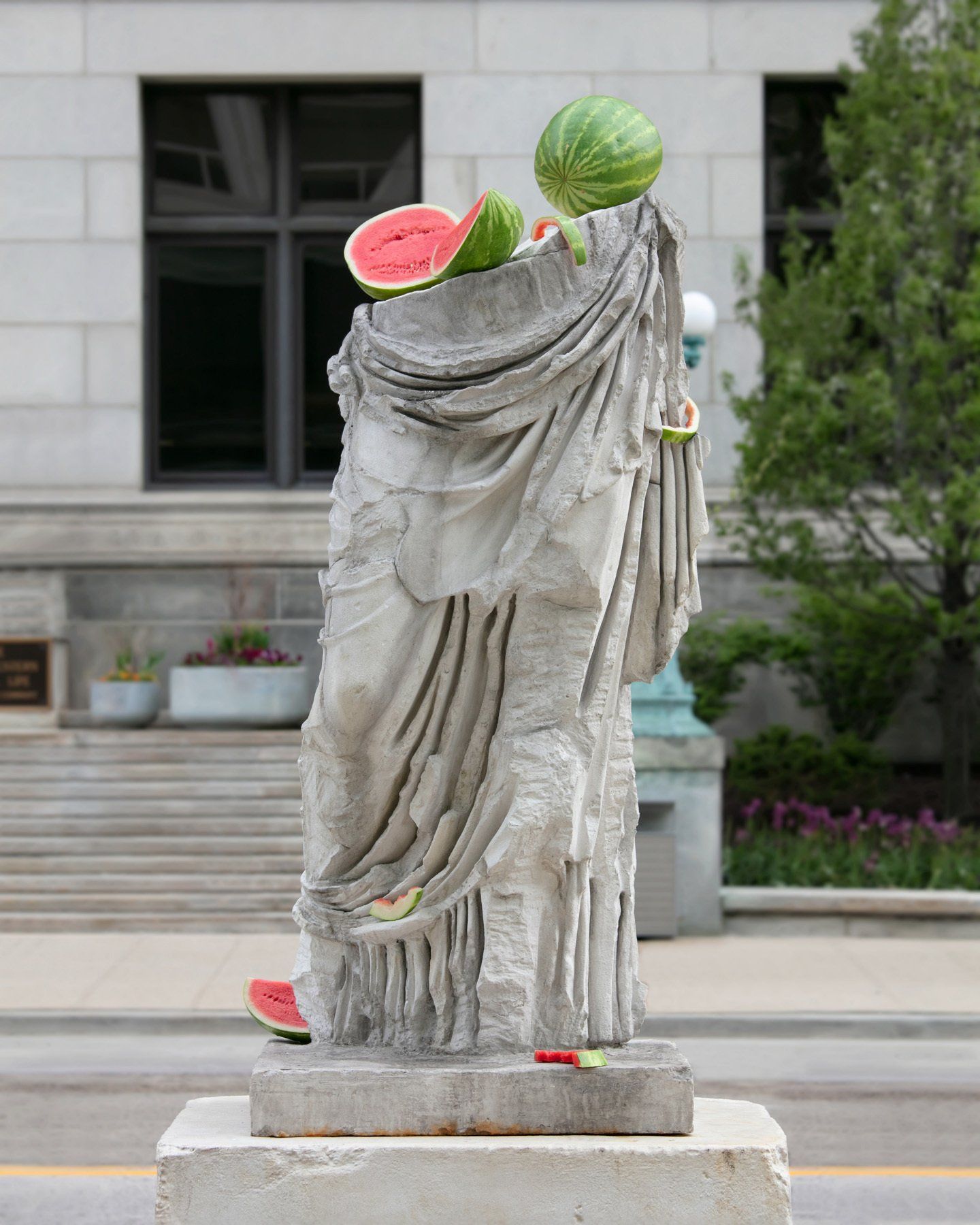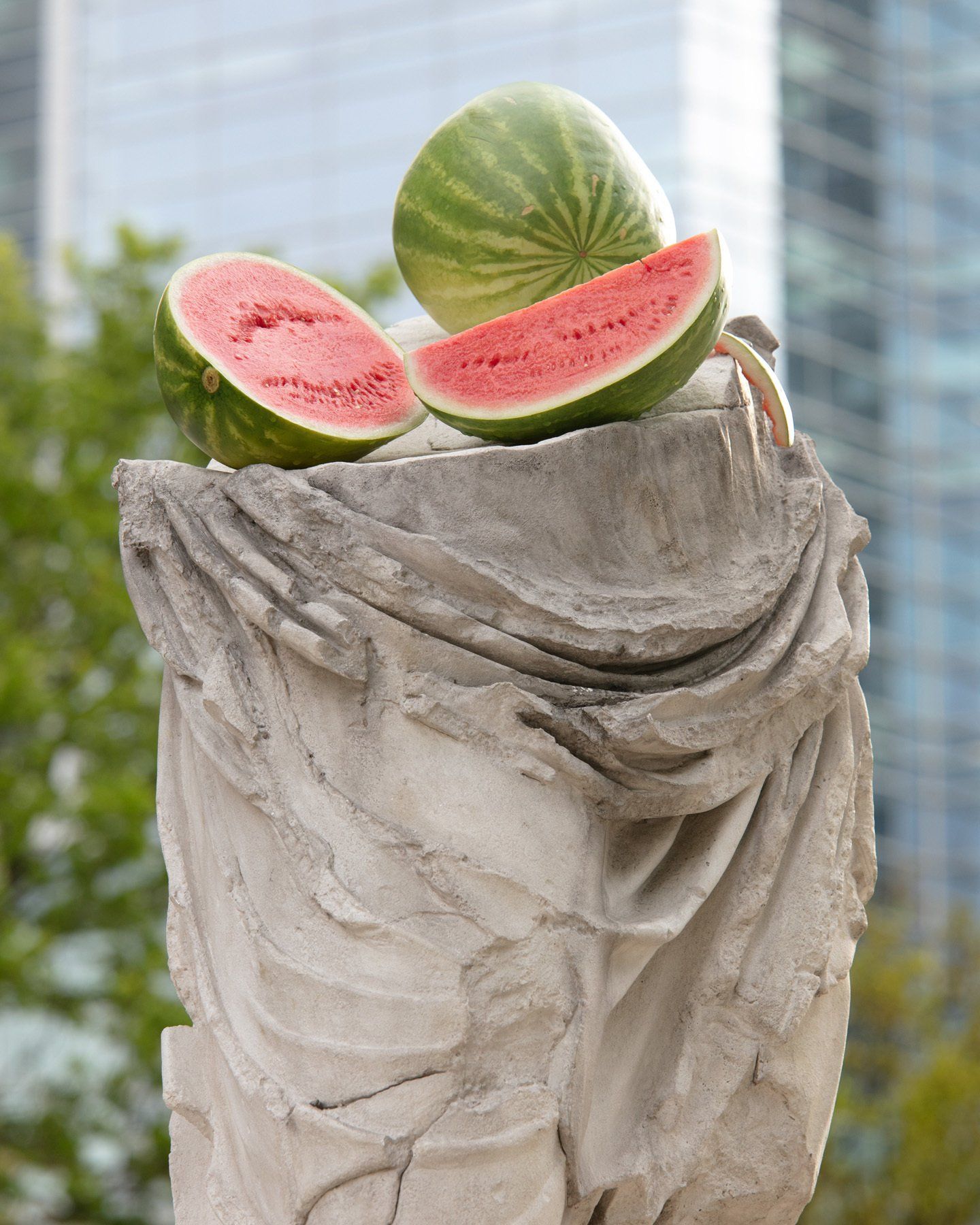2019 Exhibition
Tony Matelli | Hera (Half)
| 2018
Tony Matelli | Hera (Half)
| 2018
cast stone, steel, painted urethane | 122 x 35 x 33
Courtesy the artist and Marlborough, New York
Tony Matelli’s artistic practice juxtaposes the ancient and the topical, the classical and the common. Matelli describes his surreal garden statues as modern-day memento mori, a still life that suggests the transience of life, how the moment of perfection is the start of decay.
Hera (half), 2018, is one of the most monumental of Matelli’s anti-monument sculptures. Hera was the Queen of the Greek Pantheon, and ruled over heaven and earth. She was the Goddess of marriage and birth, protector of women, the punisher of cheating husbands.* She stands the regal protector of the family of watermelons blooming around her, the halves and quarters of the fruit looking like the phases of the moon.**
Hera (half)
suggests many things. She mocks our modest efforts to decorate our gardens with mirrored balls or small figurines nestling amongst the perennials. Matelli’s memento mori shows the decaying human ideal against the tantalizing richness of the sweet fruit, culture versus nature as both decompose.
Hera (half)
reflects on our obsession with ancient Greek, but Matelli deconstructs our expectations of classical art. His Hera (half)
is cast in gritty, granular gray cement, not carved in classical white Carrara marble. Cement was used extensively throughout the Roman empire, but has become the material most representative of our post-industrial urban landscape. And despite the passage of time, we still hold onto the idea of Gods and Goddesses—but in our century, it is celebrities and athletes that we worship.
Matelli chooses his ancient figures because they represent decline—of human strength, perhaps of empire. This work plays with our sense of history and the brevity of life, and the human drive to preserve and record the past. Matelli brings this ancient figure to the 21st century, asking us to reflect on the meanings of this juxtaposition in our contemporary language.
** Watermelon has been linked to a wild fruit still growing in Egypt and Sudan; watermelon seeds were found in King Tutankhamun’s tomb, and in Pharaonic hieroglyphs. https://news.nationalgeographic.com/2015/08/150821-watermelon-fruit-history-agriculture/
777 E. Wisconsin Ave. - US Bank Building Northeast entrance






